Italy 1: Senterio delle Orobie Occidentali
I'm lying in a hotel bed in Foppolo listening to the sound of cow bells outside the veranda window. My thoughts pause for a moment to wonder why I immediately associate this sound with cow bells as opposed to goat or sheep bells. It has only been four days that we have been walking the Senterio delle Orobie Occidentali through the Bergamo Alps, the sound of goat and sheep bells ringing throughout, like beautifully designed wind chimes. My thoughts wander for a moment to remember a night spent near the North Dakota state highpoint listening to sheep bleat through the night. The rural sounds of small animal groups delights my senses, something primal rises within. The rural landscape is rich with smells and scenic wonders, some wild, and others, like here, so rugged, and yet humanized... I look around, and perhaps I'm reading in too much, but I see scars from thousands of years of changing trails, humans and animals, crisscrossing the mountainsides, so steep I believe the humans to be part goat. Is it as any other place that has been occupied for so long, were there once more trees? Were these mountainsides once more forested?Our journey here began when we left Milano on a train a week ago to reach the outskirts of a town not far from Lake Como, Oggiono. It was 103 deg F. We hiked eastward toward Lecco, over steep hillsides, past neighborhood kitchen gardens full of corn, squash, and tomatoes, and through small towns and villages. We hiked past Ello, a very small town, and later came upon the small village of Fagina, so small that I only saw three people, two large vegetable gardens and a sign for beef agriculture, but only a handful of cows. We stopped to get water from a fountain with a sign reading "aqua non potable". There was a bucket sitting next to it full of soaking clothes. I smiled because this too is how I wash my clothes at our homestead in Arizona. Later we walked through the town of Olginate, most of which looked like an abandoned amusement park completely tagged with graffiti except for a well kept chapel. We descended into the town of Garlata to a campground, Riviera Camping Village. I was hot and tired. The camp host spoke English and led us to a grassy spot next to the lake. We stayed two nights. The camp cafe was closed on our last morning and our neighbors offered us coffee. I really only speak English, but Neon's first language was Spanish, then English, then German and French (he also seems to know a good selection of words in several other languages) so he can hold a conversation, at least a little bit with most anyone we meet. And since I know his stories so well I can usually follow along a little in the conversation. After coffee we walked into Lecco to catch a bus to Barzio. We made it just as the bus pulled in, one of the few that runs on Sunday. After lunch in Barzio we walked to the market, but it had closed at noon. The hotels were all full and we don't really have a budget for hotels anyhow so we hiked out of town to cowboy camp at the ski lift. The next day we returned to Barzio to the market, selected food for four days of hiking and then returned to the ski lift where we ascended to the mountains to hike on the Senterio delle Orobie Occidentali in the Bergamo Alps.The landscape in the Bergamo Alps is dramatic, steep, sculpted, jagged mountains and green hillsides. It is full of stone farmhouses, herds of goats and sheep with bells around their necks, a few cows, and a culture that is older than anything I have ever known. The farmers that roam these mountainsides know place in a way that few Americans have hardly witnessed, and none, or very few, have ever known. I feel privileged to be here, to see this, but as always I feel a loss, a yearning to feel, even if perhaps for only a moment, what it is to know place connected to so much time and history as I am witnessing here.We spent the afternoon walking the steep mountainsides and arrived at Rifugio Grassi a few hours before dinner. There were two children outside the Rifugio running back and forth over the hillside, barefoot, tugging at a blanket, laughing, across the grass and over the rocks. Grandma was watching them as she carried a younger one on her back. We spoke to the mom inside to inquire about camping and dinner. She spoke English. We asked about the next section of trail since it was marked differently on our map, inquiring as to how dangerous it might be. The lady smiled and said "Oh no, it's not dangerous. You only have to hang from your hands in a few places. It's a trail in the mountains at high altitude, but it's not dangerous." Hmm, I looked around, there was beer and wine and chocolate for sale.We set up camp and came back for dinner. Several courses were served. I asked about what looked like medicinal tinctures in the window since I recognized the arnica flowers in one of the jars. Some of them were medicinal, but others were grappa soaking with herbs, cherry pits, or tree needles and cones for added flavor. A few people spoke English and I listened intently to Neon's stories in Italian, trying to pick out the parts I know.We left the next morning after coffee. As we walked down the trail I anticipated the "oh no, it's not dangerous, you only have to hang from your hands in a few places" part that we would encounter. After a bit we hiked across a narrow ridge, dropping off on both sides, before we arrived at the cables where we were to traverse across the outside of the ridge. My nerves settled, rock, I love rock. This, this is ok! We hiked on, and then came the part, that for me, was not ok, steep, very steep, traversing on very thin trail, perhaps a single foot wide, dropping off thousands of feet on one side, interspersed with erosion and wet grass. The mind is a funny thing, or perhaps it's the body, you can try to be rational, but panic has a course all it's own. I've learned to work with this, as I have many fears, though perhaps not entirely gracefully. It was a long morning as I coached my breathing and talked myself across the eroded, steep, thin, hardly trail. It finally mellowed after a couple of hours, my nerves settled, and the "trail" turned to a kind of steep that was much more comfortable for me. My muscles were tired and the afternoon hot. We descended to a meadow before reaching Rifugio San Marco. We decided to camp. A creek came into view. I dropped my stuff, dug out some fresh clothes, removed the sweat soaked ones, and slid into the creek, literally as the rocks were very slippery. A herd of goats wandered up the trail from a nearby farmhouse, their bells echoing against the hills. Jäger, cheese, bread, bells, and freshly bathed, the day came to an exquisite end.We sipped on cappuccino in the morning at Rifugio San Marco before heading up to the pass. The trail from the Rifugio looked like it might have been the old road over the pass. Stones were laid flat in a width that could accommodate a cart and the side bank was held with large rectangular stones. After several switchbacks we approached Passo San Marco, a place another hiker had told us was the second line of defense in World War I. Near the top I noticed faces carved in the stones along the trail. They looked to be female faces. We hiked on. There was a large cross and a Virgin Mary sculpture with a plaque. A bicyclist road by, pausing briefly to motion a cross in front of him and then kissing his fingertips. There was a food truck that was selling cheese, salami, blueberries, and a few other things. A few feet down the road was a stone building with a little shed on the side that was also selling cheese. I could hear farmers herding cows and goats, across the valley, bells echoing. Almost everywhere I could hear these bells echoing. They would fade as we crossed over one hillside, only to get louder as we approached another. The stone farmhouses began to get smaller as we hiked eastward, instead of two story large houses most, now, were small, what looked like single room stone dwellings. Some had newer metal roofs and stone walls with mortar, while some of the older, dry-stack stone ones still had stacked stone roofs. The smaller dwellings were closer together on the hillsides, perhaps a hundred acres apart. I could see piles of stones in the grass as we hiked and stone fence enclosures, some near dwellings and some far away from the dwellings. Occasionally we came upon one of these dwellings that was inhabited by a person or two, with goats, sheep, or cows nearby. There was no road access out here, only trails. I wondered if they lived here all year round or if they only lived here during the summer months to have more grazing for the animals. We camped near Tortano Pass. There were two shepherds and a couple of dogs herding a few hundred sheep down from the mountainside. The bells echoed through the night, sheep bleating ...mountain music to dream by.The sheep were still there in the morning. We climbed up and over two more passes before descending to Foppolo. As I listen to the cow bells outside the veranda window I'm thinking that perhaps the cows, sheep, and goats wear different size bells so the farmers can tell where their different animal herds are in the mountains.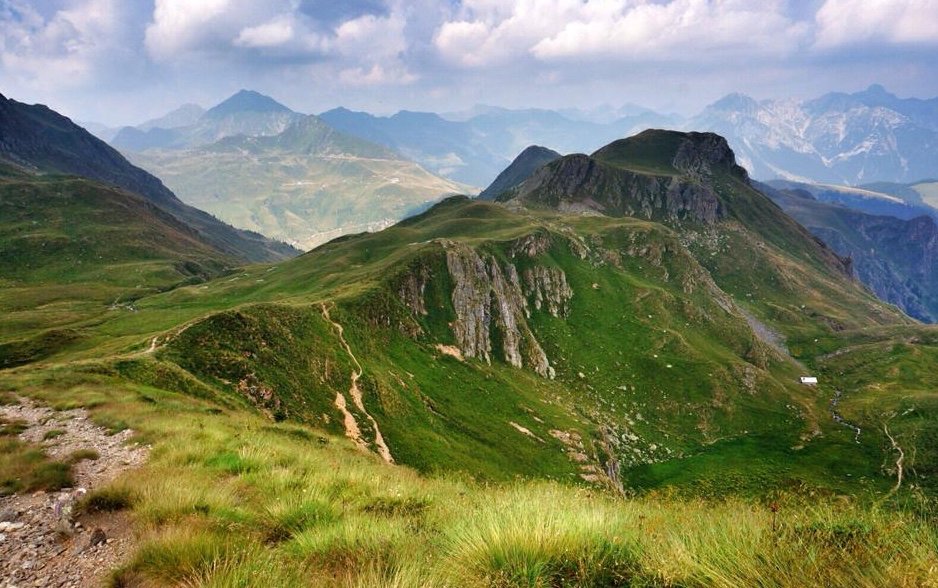

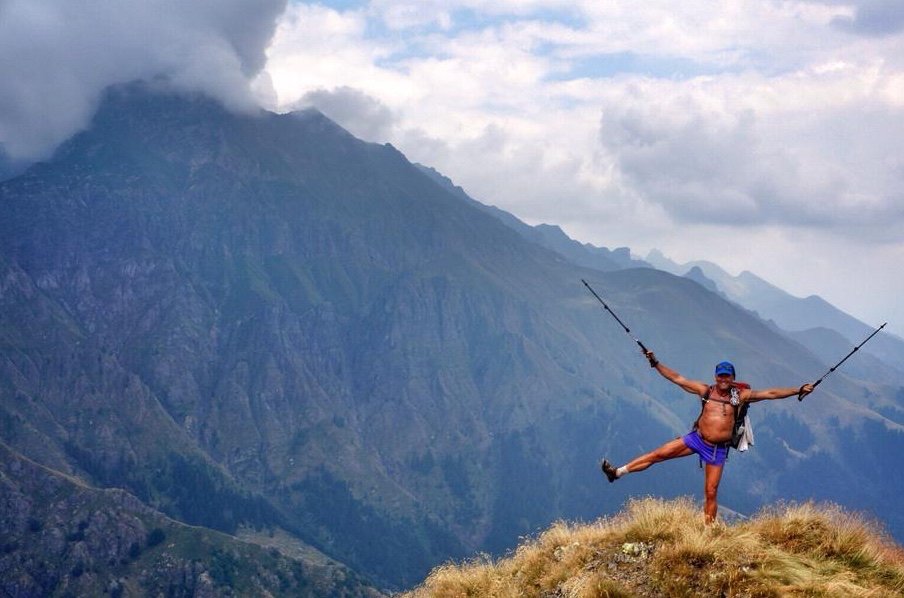
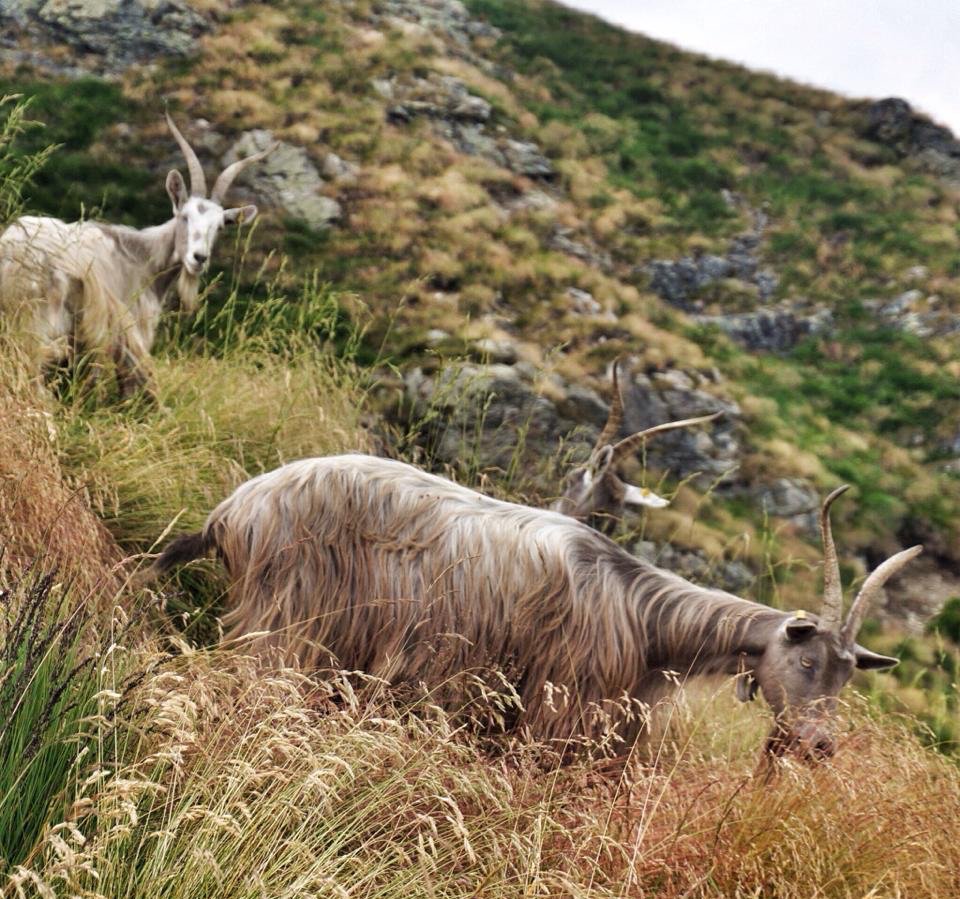

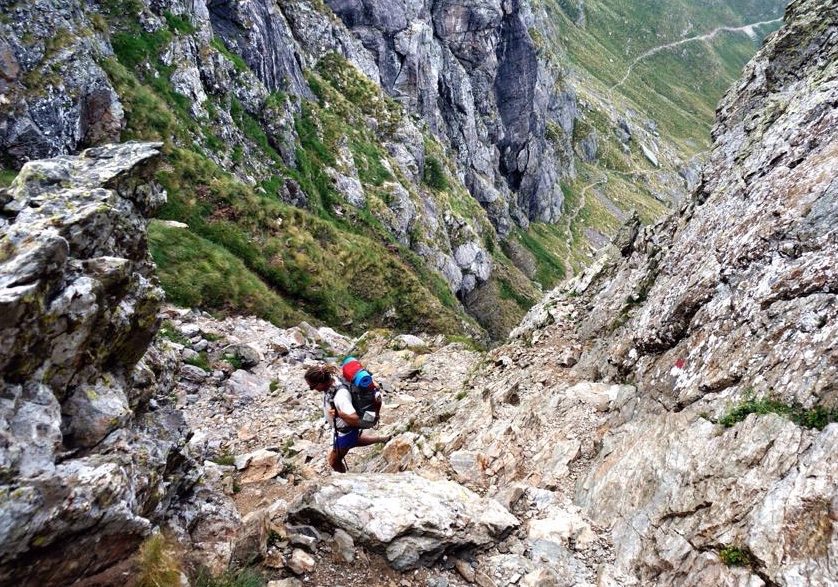

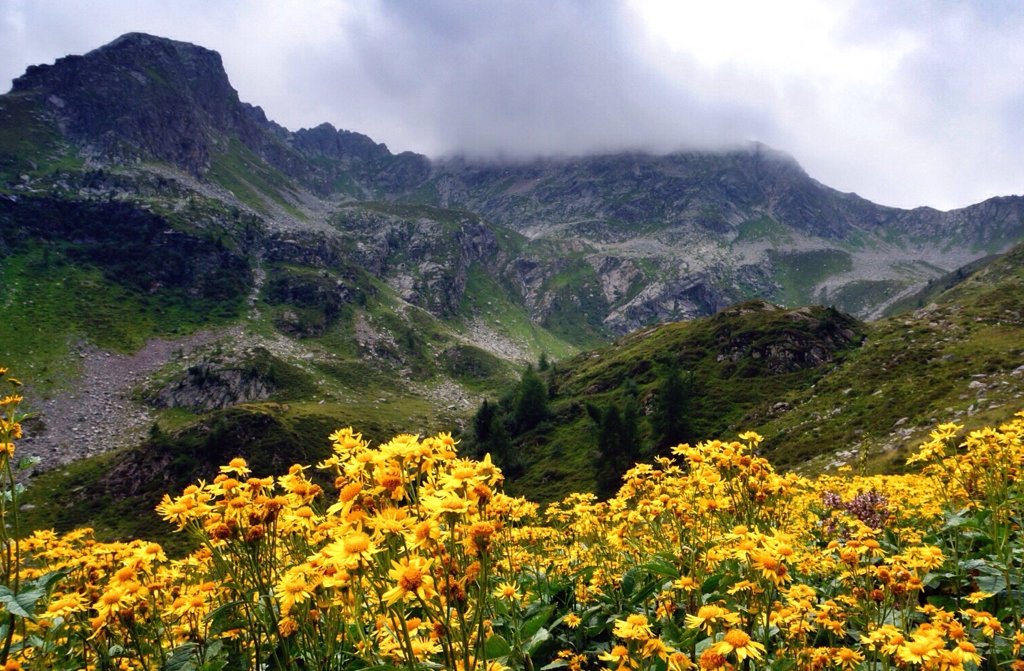
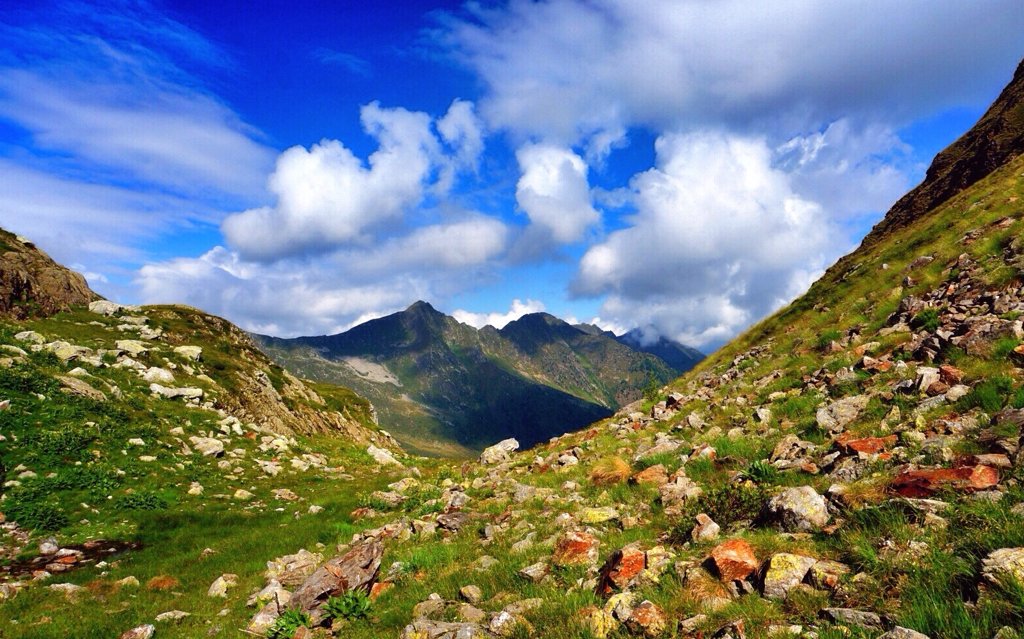 _
_

